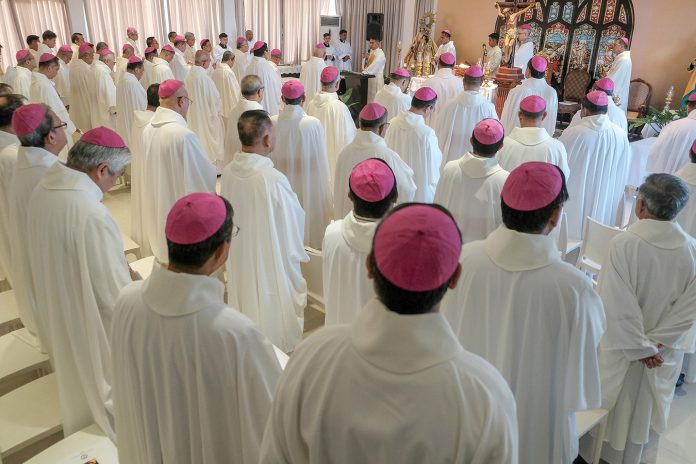The Catholic bishops’ leadership has given its endorsement to the proposed division of the Archdiocese of Cebu and the Diocese of Butuan.
Gathered for their plenary assembly on July 9 in Kalibo, Aklan, the bishops voted in favor of creating at least three new dioceses in the Philippines.
In Cebu, the proposal seeks to create two new suffragan dioceses—Carcar in the south and Danao in the north.
Its archbishop, Jose Palma, said the move was a fruit of the recently concluded celebration of the 500th year of Christianity in the country.
The new dioceses, according to him, aim to enhance the pastoral and spiritual care of the faithful while keeping central Cebu as the seat of the archbishop.
Proposed Diocese of Danao
Spanning a land area of 1,814.58 sq. km, the proposed Danao diocese encompasses two cities and 19 municipalities, including Bantayan and Camotes islands, with a population density of 679.99 per square kilometer.
Recent government statistics showed a total Catholic population of 1.9 million in the proposed new diocese.
The north Cebu diocese currently consists of 51 parishes, 1 quasi-parish, and a chaplaincy. It requires at least 84 priests to serve in the parishes and the curia.
Proposed Diocese of Carcar
The proposed Carcar diocese, meanwhile, covers three cities and 20 municipalities, spanning a total land area of 2,307.31 sq. km with a population density of 558.77 per sq. km.
With a population of about 1 million, it comprises 56 parishes, a diocesan shrine, and a chaplaincy. At least 84 priests are needed to serve in the parishes and the curia.
The central part of Cebu will serve as the seat of the archbishop and head of the Metropolitan Province of Cebu, encompassing four cities and five municipalities.
After the creation of the two new dioceses, it will comprise a total land area of 1,192.11 sq. km with a population density of 2,188.62 per square kilometer.
The remaining Catholic population is 2,609,079 individuals distributed across 60 parishes, 1 quasi-parish, a chaplaincy, a mission area, and a diocesan shrine under the Basilica Minore del Santo Niño.
The archdiocese estimates a need of about 200 priests to serve in the parishes, the curia, and other institutions.
Currently, there are 375 diocesan priests and 278 religious who are serving the archdiocese, “which is sufficient to meet the needs of the ecclesial territory”.
Proposed Diocese of Prosperidad
On the other hand, the CBCP also voted in favor of the proposal of Bishop Cosme Damian Almedilla to split into two the Butuan diocese, which currently covers the provinces of Agusan del Sur and Agusan de Norte.
Based on the plan, a new Diocese of Prosperidad will cover the entire Agusan del Sur, while the Butuan diocese will mainly comprise Agusan del Norte.
Agusan del Sur is considered a “missionary frontier”. Its far-flung communities are scattered all over the landlocked and mountainous parts of the province.
About one-third of the province’s population are also indigenous peoples (IPs).
“Environmental issues, peace and order concerns, and the plight of IPs dominate the social and pastoral landscape,” Almedilla said.
The bishop also said the diocese’s current jurisdiction covers a vast land area with a steadily growing population, presenting “many challenges” for the pastoral care of the local Church.
In some cases, he said that parishioners and participants in diocesan gatherings would need to travel for four to five hours from Agusan del Sur to reach the cathedral, bishop’s residence, and the diocesan curia in Butuan City.
Once approved by the Vatican, the bishop said the “strategic move” seeks to cultivate the spiritual growth of the faithful and improve administrative efficiency within the respective dioceses.
Currently, the Catholic Church in the Philippines comprises 86 ecclesiastical jurisdictions (Archdioceses, Dioceses, Vicariates and Prelatures), including the Military Ordinariate of the Philippines.









